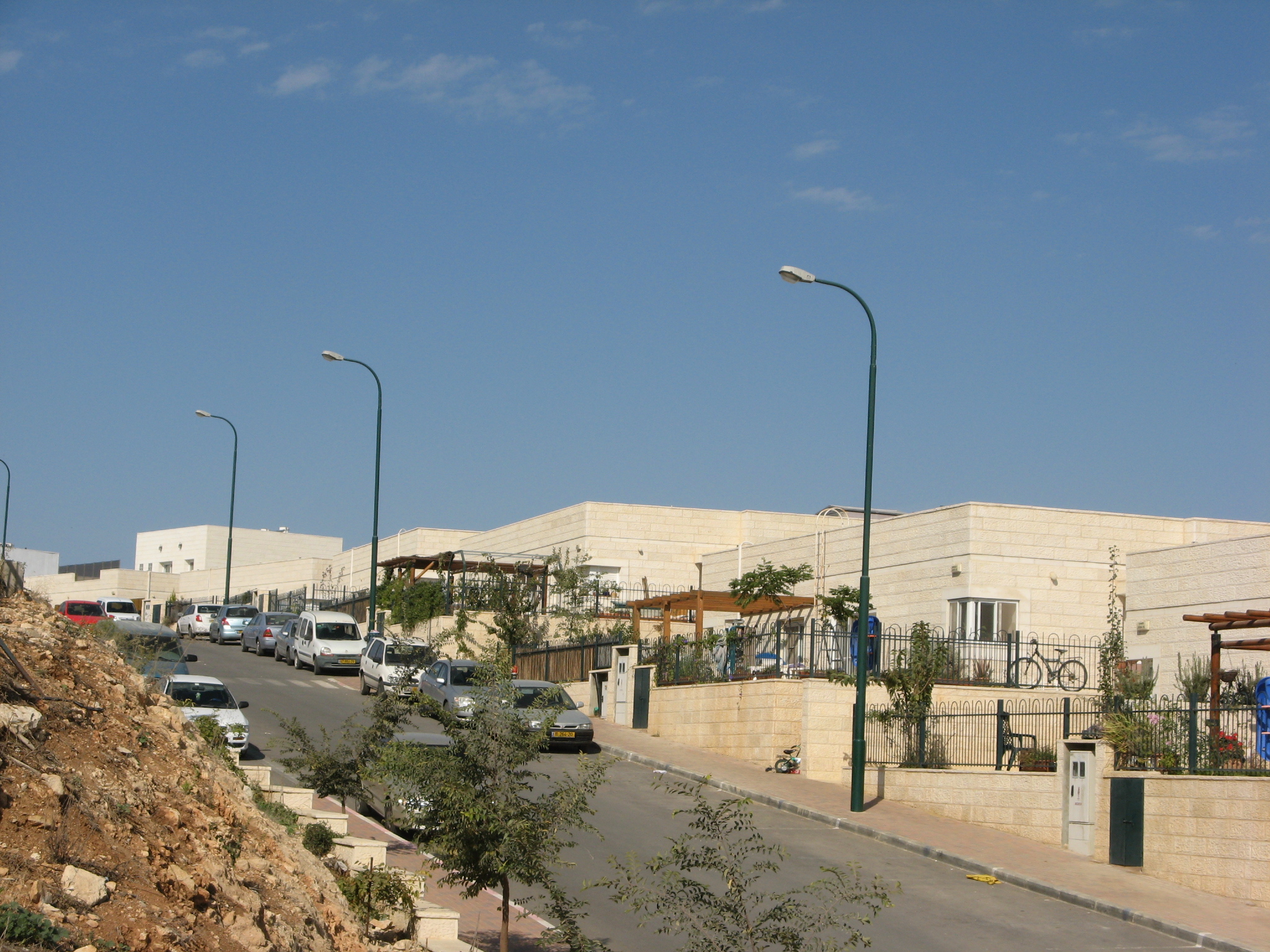Rosh Tzurim on:
[Wikipedia]
[Google]
[Amazon]
 Rosh Tzurim () is an
Rosh Tzurim () is an
Israeli settlement
Israeli settlements, also called Israeli colonies, are the civilian communities built by Israel throughout the Israeli-occupied territories. They are populated by Israeli citizens, almost exclusively of Israeli Jews, Jewish identity or ethni ...
and religious kibbutz
A kibbutz ( / , ; : kibbutzim / ) is an intentional community in Israel that was traditionally based on agriculture. The first kibbutz, established in 1910, was Degania Alef, Degania. Today, farming has been partly supplanted by other economi ...
in the West Bank
The West Bank is located on the western bank of the Jordan River and is the larger of the two Palestinian territories (the other being the Gaza Strip) that make up the State of Palestine. A landlocked territory near the coast of the Mediter ...
established in 1969. It is located about south of Jerusalem, 3.9 km east of the Green Line, inside barrier wall. A member of the Religious Kibbutz Movement
The Religious Kibbutz Movement (, ''HaKibbutz HaDati'') is an organizational framework for Orthodox kibbutzim in Israel. Its membership includes 22 communities, 16 of them traditional kibbutzim, and 6 others in the category of Moshav shitufi, ...
, it falls under the jurisdiction of the Gush Etzion Regional Council
The Gush Etzion Regional Council (, ''Mo'atza Azorit Gush Etzion'') is a Regional council (Israel), regional council in the northern Judean Hills, the northern part of the southern area of the West Bank, administering the Israeli settlements, se ...
. In it had a population of .
The international community considers Israeli settlements in the West Bank illegal under international law, but the Israeli government disputes this.
Name
The name originates from the Biblical passage "For from the top of the crags I see him" ()Carta's Official Guide to Israel and Complete Gazetteer to all Sites in the Holy Land. (3rd edition 1993) Jerusalem, Carta, p.403 , (English) - just like the neighbouring village Gevaot.History
According to ARIJ, Israel confiscated land from two nearbyPalestinian
Palestinians () are an Arab ethnonational group native to the Levantine region of Palestine.
*: "Palestine was part of the first wave of conquest following Muhammad's death in 632 CE; Jerusalem fell to the Caliph Umar in 638. The indigenous p ...
villages in order to construct Rosh Tzurim: 110 dunam
A dunam ( Ottoman Turkish, Arabic: ; ; ; ), also known as a donum or dunum and as the old, Turkish, or Ottoman stremma, was the Ottoman unit of area analogous in role (but not equal) to the Greek stremma or English acre, representing the amo ...
s from Nahalin, and 780 dunams from Khirbet Beit Zakariyyah.
The settlement was established in 1969 by members of Bnei Akiva
Bnei Akiva (, , "Children of Akiva") is the largest religious Zionist youth movement in the world, with over 125,000 members in 42 countries. It was first established in Mandatory Palestine in 1929, advocating the values of Torah and labor.
Bne ...
Religious Scouts and Nahal
Nahal () (acronym of ''Noar Halutzi Lohem'', lit. Fighting Pioneer Youth) is a program that combines military service with mostly social welfare and informal education projects such as youth movement activities, as well as training in entrepr ...
soldiers.
Rosh Tzurim is located on the site of the ancient Beth Zechariah and on a hilltop that had previously been occupied by Ein Tzurim, a kibbutz that was destroyed in the 1948 Arab-Israeli War
Events January
* January 1
** The General Agreement on Tariffs and Trade (GATT) is inaugurated.
** The current Constitutions of Constitution of Italy, Italy and of Constitution of New Jersey, New Jersey (both later subject to amendment) ...
by the Jordanian Arab Legion
The Arab Legion () was the police force, then regular army, of the Emirate of Transjordan, a British protectorate, in the early part of the 20th century, and then of the Jordan, Hashemite Kingdom of Jordan, an independent state, with a final Ar ...
and later re-established in the Lakhish area.
Rosh Tzurim went through a privatization process, first through the rental of available houses, and later an additional neighborhood, Nof Tzurim, was built on the kibbutz.
Economy
The kibbutz raises turkeys, produces milk and grows grapes for wine production along with other fruits.References
{{Authority control Religious Kibbutz Movement Nahal settlements Populated places established in 1969 Religious Israeli settlements Gush Etzion Regional Council 1969 establishments in the Israeli Military Governorate Israeli settlements in the West Bank